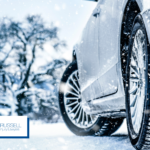There has been a long-standing fallacy that vehicles can provide full protection when lightning strikes. That’s not entirely the case. The National Lightning Safety Institute reports that some vehicles struck by lightning experience external damage, including pitting and arcing, as well as internal damage to electronic systems and components.
In layman’s terms, what happens to most cars is that the lighting will flow around the outside of a car, with the majority of the current flowing from the car’s metal cage into the ground below.
What to do when driving in a lighting storm?
The National Lightning Safety Institute strongly suggests safely pulling off to the side of the road, waiting out the storm, turning off the engine, putting one’s hands in one’s lap and not touching inside items such as door and window handles, steering wheels and gear shifts.
What is safe – and what isn’t
- Heavy equipment such as bulldozers and backhoes with rollover canopies are safe during thunderstorms,
- Riding mowers and golf carts are not safe to be in.
Roll up the windows and don’t touch any part of the metal frame – this means resting your arm on the window or any wired device that might be in the vehicle. For example, the steering wheel or a cell phone that is plugged into the car.
Should a direct strike hit your car, the electric current will flow through the entire frame of the vehicle and typically jump over or through the tires to reach the ground. Most recorded lightning strikes to vehicles typically result in one or more flat tires occurring and damage to the entire electrical system – but no injury to the occupants as long as they stayed away from any metal framework.
Safety Reminder:
- You also should not to touch the radio,
- Do not talk on the cell phone,
- If you are driving, pull to the side of the road, turn on your hazard lights, turn off the engine and wait out the storm.
At Dye & Russell we understand the laws that affect your rights to compensation. Our legal experience within the insurance industry provides the insights required to expedite and secure top results as quickly as possible.
If you have been injured, and need legal assistance, call #1000 on your cell phone for free. We will offer you a free claim assessment.






